Chasing Bolaño’s Ghost
A visit to Blanes
My fondness for seaports, harbor towns, and beach cities, real and imagined, is pretty well documented. I was conceived in a beach city and like a salmon returning to its spawning ground now make my home in that town. I did a stint in the Navy and lived onboard a ship. I spent nearly a decade in LA’s South Bay. I feel most at home in a place where you can taste the salt in the air.
Beach cities are hard to crack. They don’t give up their secrets that easily. The locals can be hostile to outsiders. The culture is harder to find because the face it puts on is for tourists. Here is the sea. Here is the sand. Here are the places where you can park your car and empty your wallets and get the fuck out.
Beach cities are the antithesis of cool. They’re deliberately tacky, ostentatious, overpriced. They cater to the worst kind of people. There are plenty of terrible beach cities. If you’re a single person in your early twenties, there’s no better place to be in San Diego than Pacific Beach. But for everyone else it’s a part of town you want to avoid like an STD, unless it’s an STD you’re after then Pacific Beach is the place where the syphilis meets the sand.
This probably isn’t a popular opinion, but beach towns are best when they’re cold and empty. The cheap romance of walking down a deserted stretch of sand socked in with fog is not something I expect to get over in my lifetime. Beaches are graveyards scattered with lost toys, broken boat parts, and the picked-over remains of dead shellfish.
People come to the beach to ponder the great beyond but going to a beach at night has the opposite effect. The beach will back you up against the edge of reality. The wind pushes. The wave noise beckons. If you don’t know your limits, don’t go looking for them in the violence of the surf because they will fucking find you. Black waves and cold sand and a wind that bites with the bitterness of your deepest regret, that’s my kind of beach weather.
Bolaño did not creep from Barcelona to Blanes once he learned he was ill. He moved there for love. He lived there for a quite a long time, longer than he lived anywhere else. Longer than he lived in Santiago where he was born. Longer than he lived in Mexico when he fled Chile with his father. Longer than he lived in Barcelona.
Bolaño moved to Europe in 1977, met Carolina Lopez in Girona in 1980, and they married in 1985. They moved to Blanes that same year with the intention of opening a costume jewelry shop in the heart of the city. The couple had a child in 1990 and the following year he learned he had a terminal liver disease from which he succumbed in 2003.
The legend goes that beginning around the time of the birth of his first child and the diagnosis of his disease, he wrote a book a year, including the masterpieces Los Detectives Salvajes (The Savage Detectives) and 2666. But with Bolaño it’s always a good idea to treat these legends—along with the simple facts of his biography—with a dose of skepticism:
“Bolaño’s life—which was relayed only through his own accounts—is so fraught with uncertainty [it] reflects the central feature of his writing: almost all of the prose he produced was in some way a fictionalized version of his own life history. As such, the line between his biography and his fiction is perpetually blurred.”
This blurred boundary coupled with his self-imposed exile and the romanticism surrounding his early death made him an irresistible literary figure. Bolaño’s larger- than-life shadow, like that of Joyce and Kerouac, looms over his work, encouraging readers to tease clues from his books.
Blanes is not hard to find. It sits 44 miles north of Barcelona. It’s a straight shot by train up the coast with views of the sparkling Balearic Sea. Blanes is where Costa Brava begins, the stretch of Catalonia coastline that runs to the border with France and includes the Salvador Dalí triangle, where the great artist was born, lived, and died.
On a slightly overcast Sunday in October, Nuvia and I took the Barcelona Metro from Sant Antoni to Badalona. We walked down the hill about a third of a mile to the train station, which sits right on the beach. From there we caught the train to Blanes and were struck by how close we were to the Mediterranean. How close? It was quite easy to tell whether the sunbathers were clothed or not. It reminded us of the stretch of the Pacific Surfliner between San Juan Capistrano and Solano Beach. Total transit time was about two-and-a-half hours.
Those who made the trek to Blanes after Bolaño died in 2003 have written about their disappointment with the town. It starts with the train station.
After an hour or so of beautiful views of sun-kissed beaches the railroad curves inland around the town so that the train deposits you a mile or two from the city center. Thus, one’s first view of Blanes is from the rear. The ass-ends of cities are generally not known for their beauty. It’s not terribly far and there are buses and, sometimes, taxis but with luggage it’s not really walkable. It’s unusual for this part of Spain for the train station to be so remote from the action.
Seconds after stepping off the train Nuvia negotiated with two men from Barcelona who were headed toward the last taxi and we split the cost of a ride to Placa Catalunya. Nuvia, it must be said, has a gift for engaging people and getting them to do what she wants.
From there we walked down the promenade toward the heart of Blanes where we encountered the first placard marking the Ruta Bolaño, which documents many aspects of the author’s life in the city. As near as I can tell it was created some times around 2013 and there are seventeen spots marked on the map, which you can access at Visit Blanes.
We quickly learned to spot these helpful black and red markers as we triangulated the map from the site and the map on our phones while traipsing around the city on a self-guided tour. Tastefully designed, the markers explain in Catalan, Spanish, English, and French the significance of the site, making the author’s life in Blanes easier to imagine.
But first we had a lunch at a lovely seaside restaurant and took in the fresh air. Fortified with patatas bravas and some excellent cerveza sin alcohol, we began to explore the town.
The next stop we hit was The Old Planells Cakeshop that was owned by his friend Joan Baptista Planells who read all of Bolaño’s novels before they were published. The cake shop was right next to a café called El Petit Terrassans. We almost missed it because the café was closed and there was a Halloween carnival taking place in front of the Town Hall. A net was stretched across the small plaza and leaves scattered in the netting to give it an autumnal feel, which totally worked. The displays of bread and cheese and scenes of children playing in their costumes were far more interesting than the shuttered door.
Around the corner we stumbled upon the Sant Jordi Bookshop. I asked the bookseller “Tienes Roberto Bolaño?” He thought for a moment and then led me to a corner of the store where he had editions of Una novelita lumpen (A Little Lumpen Novelita) and 2666 stacked in a pile.
This struck me as a missed opportunity. Two of Bolaño’s early novels La Pista de Hielo (The Skating Rink) and El Tercer Reich (The Third Reich) were written when he was relatively new to Blanes and the settings for these books were based on the beach city. It seemed like the bookshop could set up a display and move a little merchandise. I don’t imagine there are large numbers of Bolaño’s readers coming to Blanes every week, but there’s a placard on the bookshop’s exterior wall. If the story had anything with Bolaño’s name on it—a T-shirt, a coffee mug, a key chain, literally anything—I probably would have bought it and so would other tourists.
We continued on our self-guided tour. We went to the store that sold board games. (Bolaño loved strategy games and they play a large role in El Tercer Reich.) We went to the pharmacy where he bought his medicine. They were both closed. Sunday afternoon was probably not the best time for this endeavor but we didn’t really care. We weren’t there to tick off spots on a list (we only went to about half of them) but to get a sense of what the writer’s life was like here, and along the way became completely charmed by the city.
Blanes is an old town that has had its ups and downs over the years but it has a Gothic church and a Gothic fountain. Many of the narrow streets that crisscross the city center had been decorated with Halloween themes by schoolchildren. Little bags of leaves with googly eyes stuck on them represented owls in one lane, little white ghosts hovered above us in another. It’s not a place that you can get lost in so much as a place you can come to know.
Our tour made it clear that what made Blanes special to Bolaño was its people. He was not a writer who lived on the outskirts of town that he only left when he needed things. He was immersed in the civic life of the city, making his daily rounds, and chatting with the people he met. In a speech he made in Blanes during a ceremony recognizing him for his literary success, he said the first people he met in Blanes were drug addicts. This is classic Bolaño. Of course that’s what he’d say. I can see Bolaño sitting on a bench on the promenade, shrugging off the morning chill to read his papers and smoke his cigarettes and converse with the only other people who were about. The kind of people locals ignore and the tourists avoid. Bolaño’s people.
We wrapped up our excursion to Blanes with a visit to some of the places where Bolaño lived and wrote. He was never as famous during his lifetime as he is now, but his life did change after the success of Los Detectives Salvajes. He was able to move into an apartment on Carrer Ample, one of the main streets in the city center, across from the Gothic Fountain.
From the outside, it seemed like a nice place, but I was struck by how Bolano had moved from Carrer Lloro, a cul de sac where he lived in a tiny apartment and kept an even smaller studio. A narrow passage under an archway was all that separated the two apartment buildings. Inside the arch is an altar of sorts to a pair of 4th century Christian Roman Soldiers, Sant Bonos and Sant Maximia, who were said to be martyred in the town though who knows if that’s true.
Bolaño wrote about the apartment on Lloro street in Los Detectives Salvajes:
“He lived in a building in the center of town, the back wall right up against the movie theatre, so if a horror movie was playing or the soundtrack was very loud, you could hear the shouts and the high notes from the kitchen, and especially if you’d already seen the movie, you’d more or less know what part it was at, whether they’d found the killer or not.
After the last show, the apartment would be plunged into a deep silence, as if the building had suddenly dropped into a mine shaft.”
I don’t know what Bolaño was thinking or feeling when he made this move and I’m not going to pretend I do. I don’t know his financial situation, where he was with his health, or what was going on with his family, but I love that when he had the means to improve his situation, he chose a spot a stone’s throw away, a place that remained in the center of things, a place he would have passed every day as he made his way around Blanes, talking to people about books and board games and politics.
He did, however, keep the tiny studio on Carrer Lloro, where he had an old computer and no telephone.
Thank you for reading. Visit my Instagram page for more photos of our trip to Blanes.

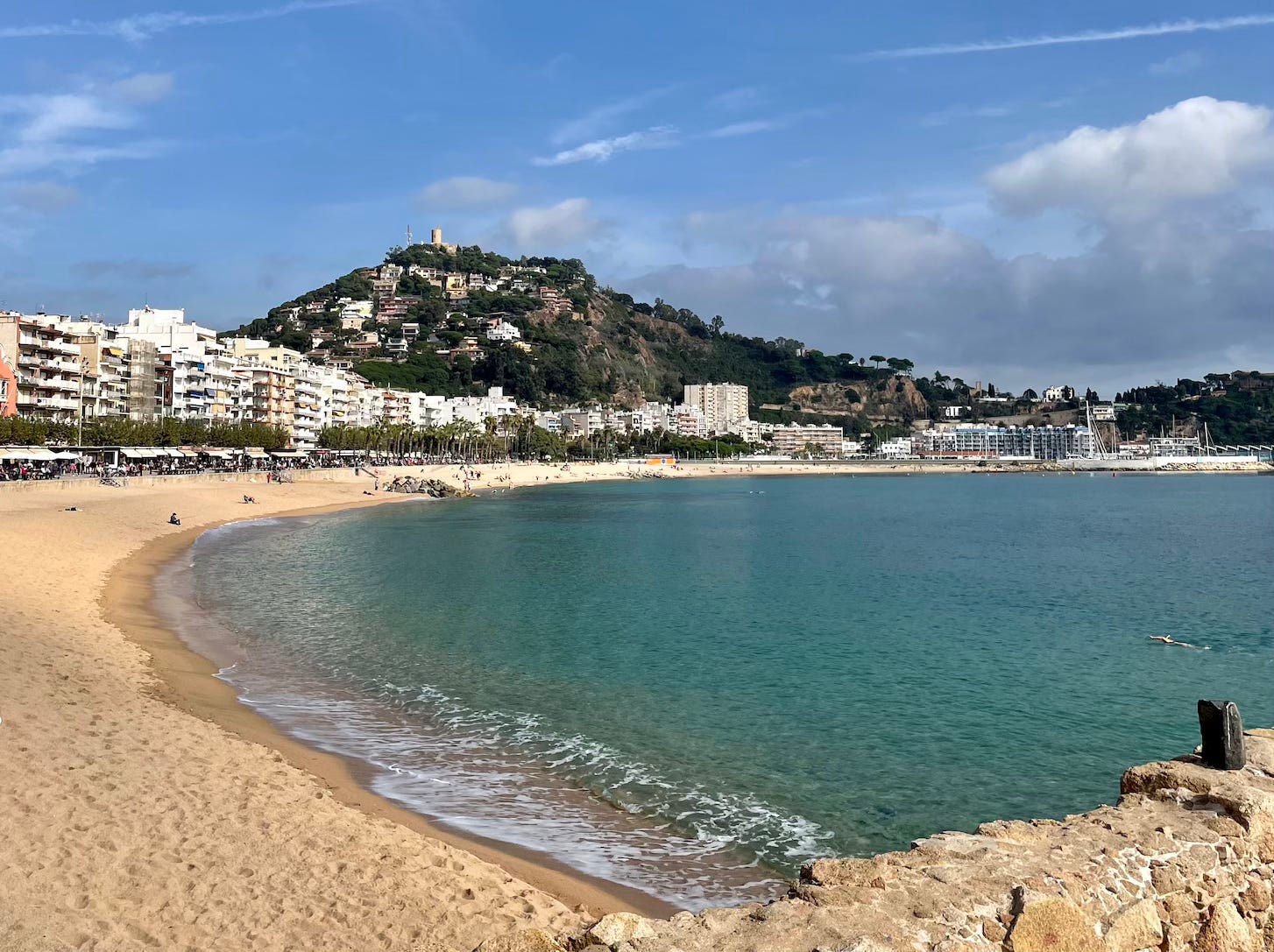
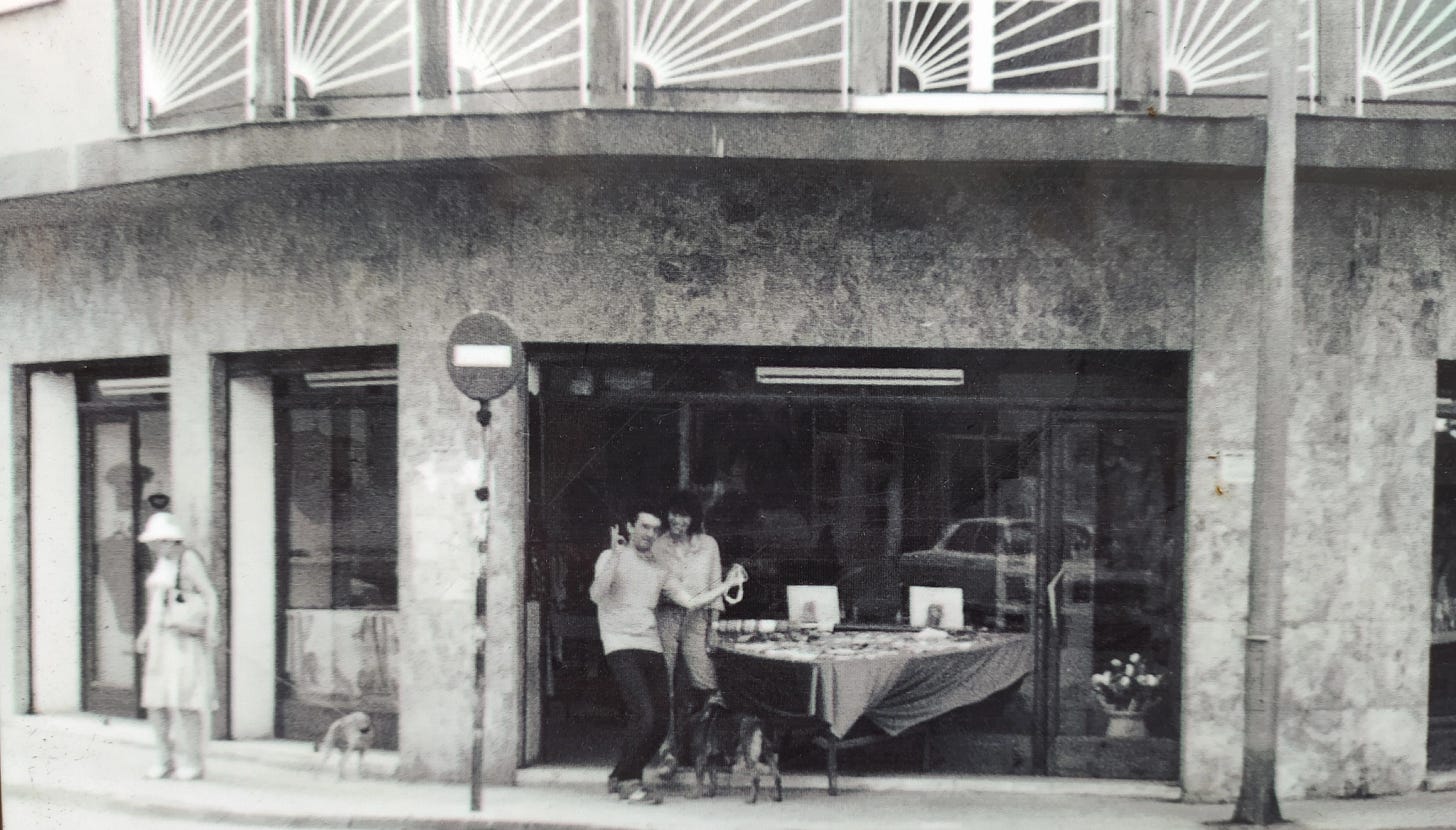
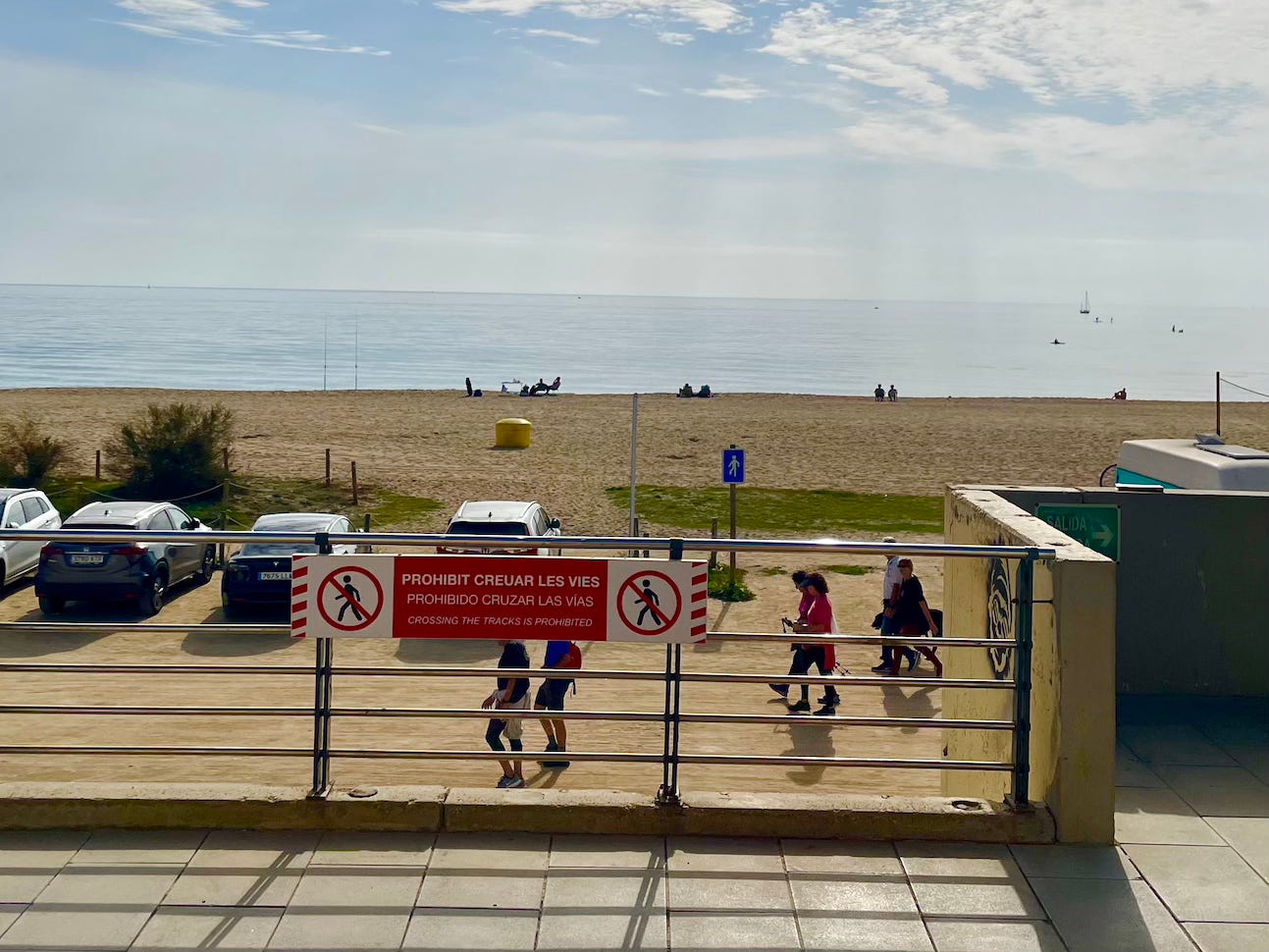
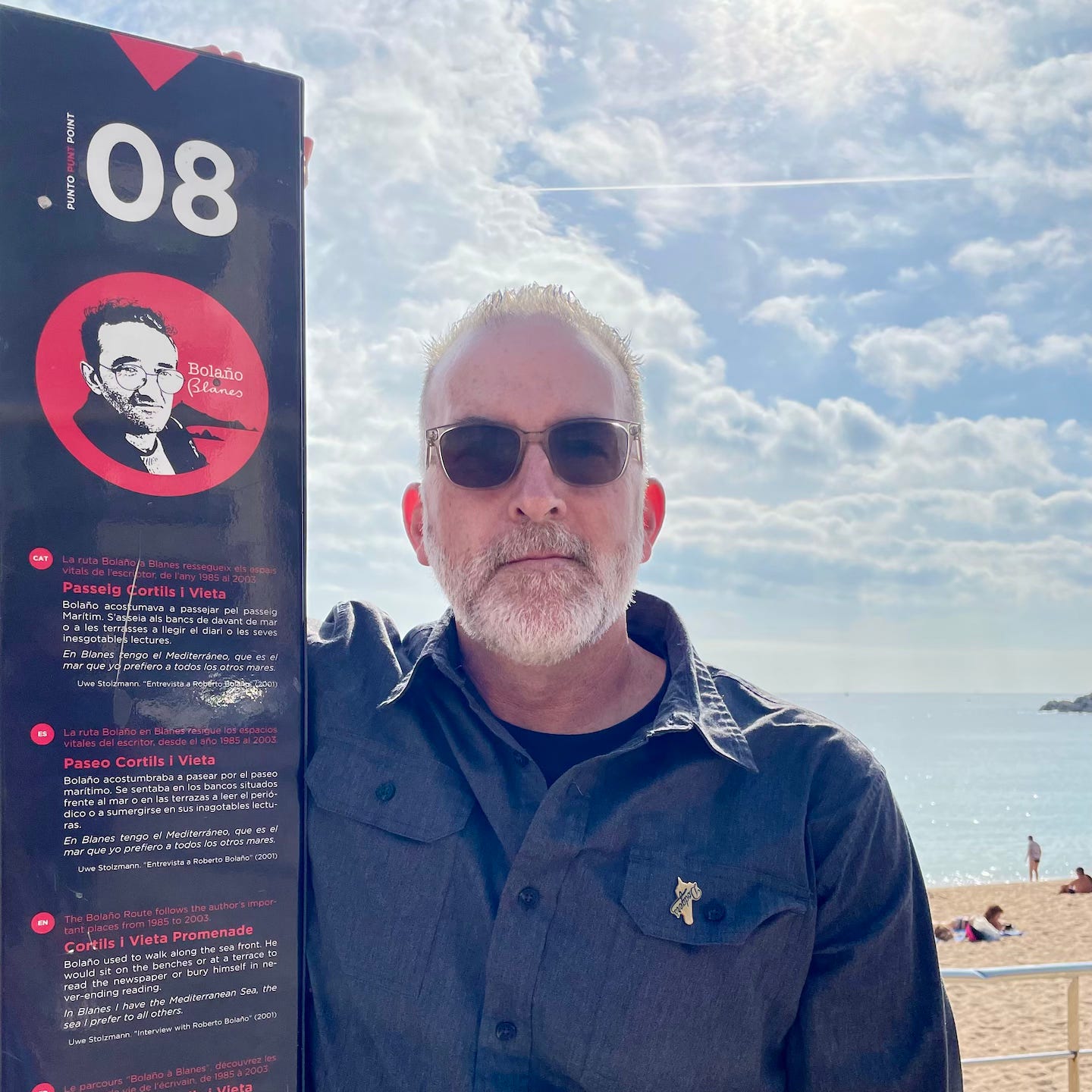
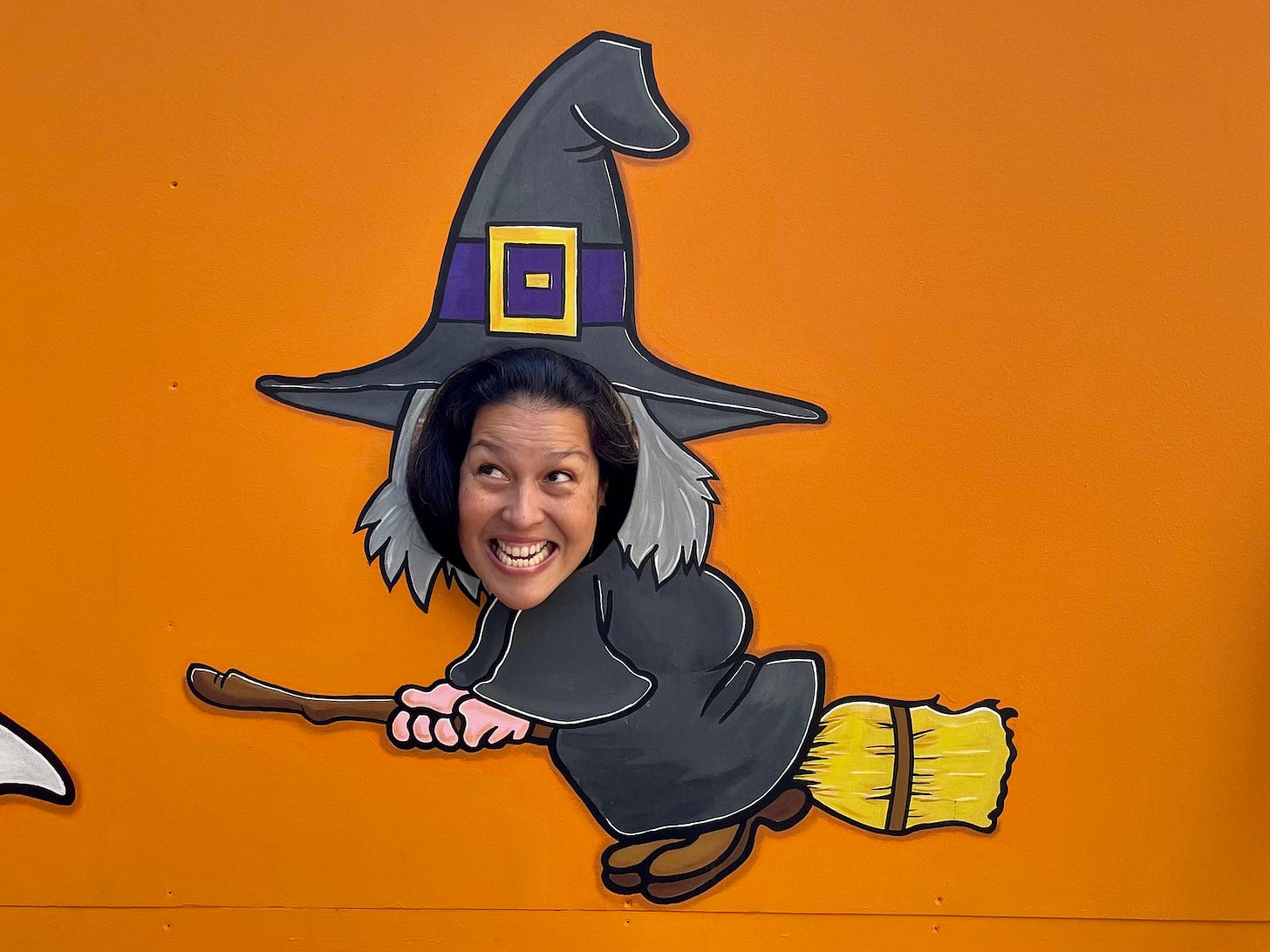
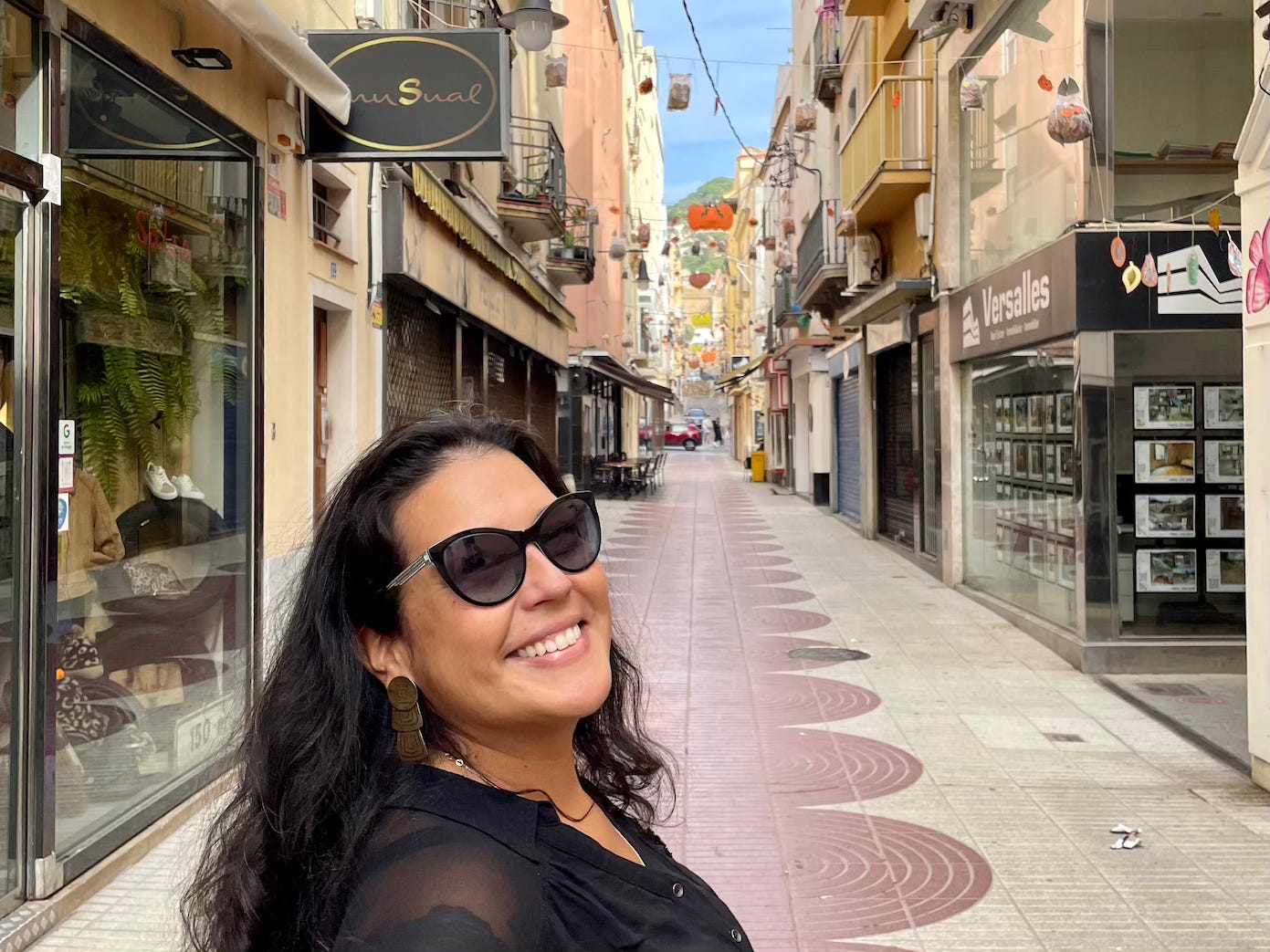
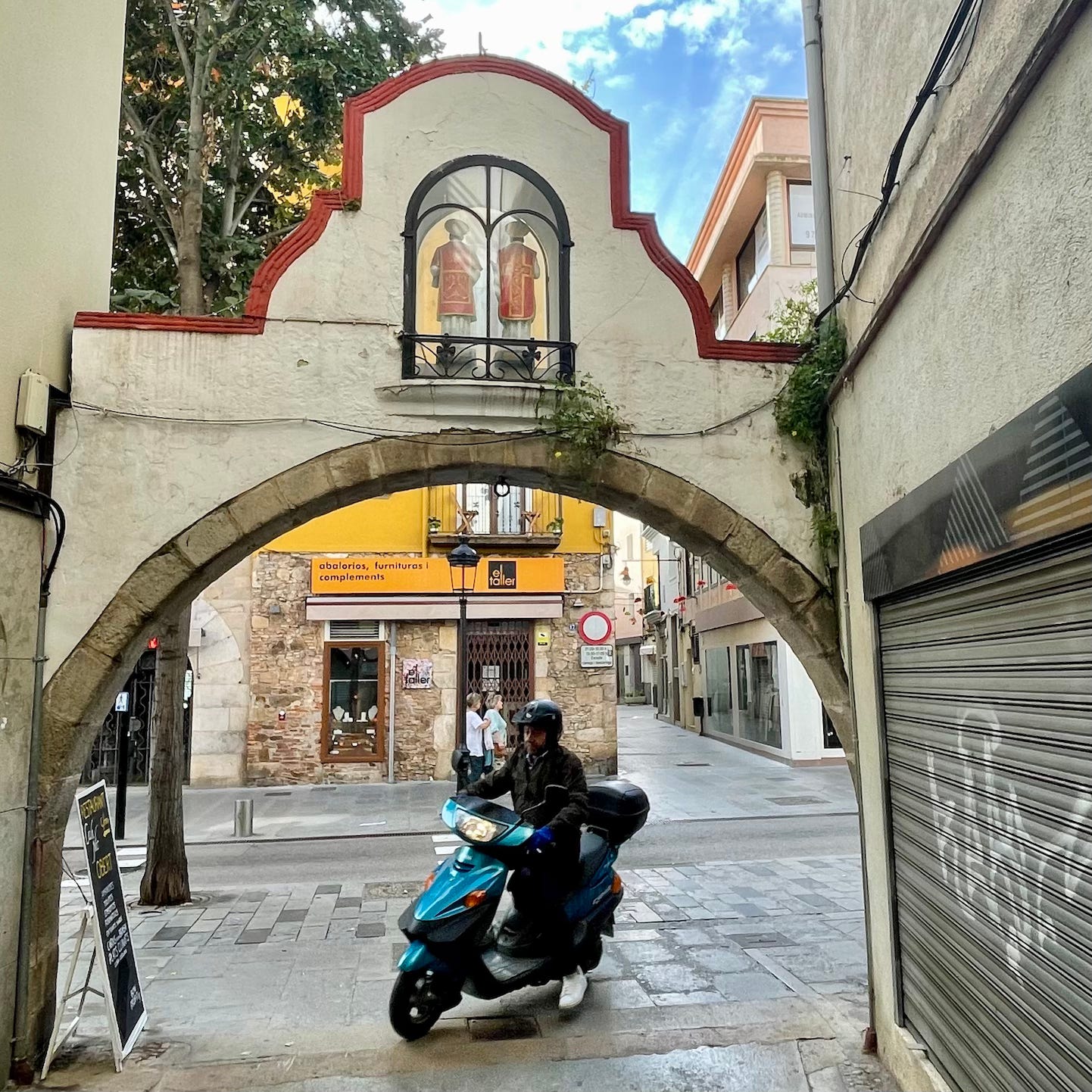
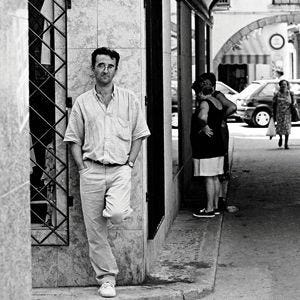
Hi Jim, Thank you for posting about your visit and the sights of the place, I really got a sense of the ideas and feelings that you describe. Fascinating!